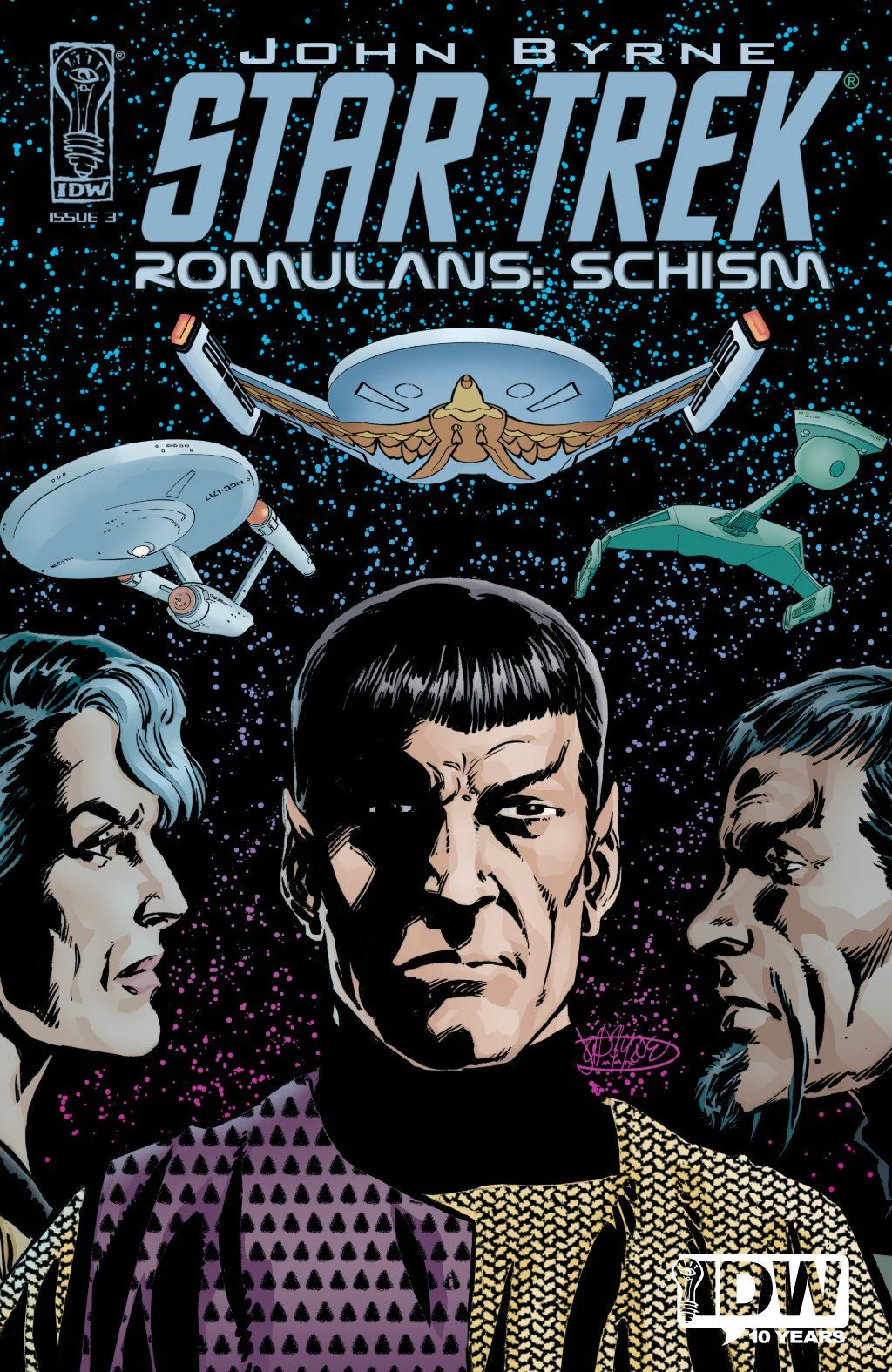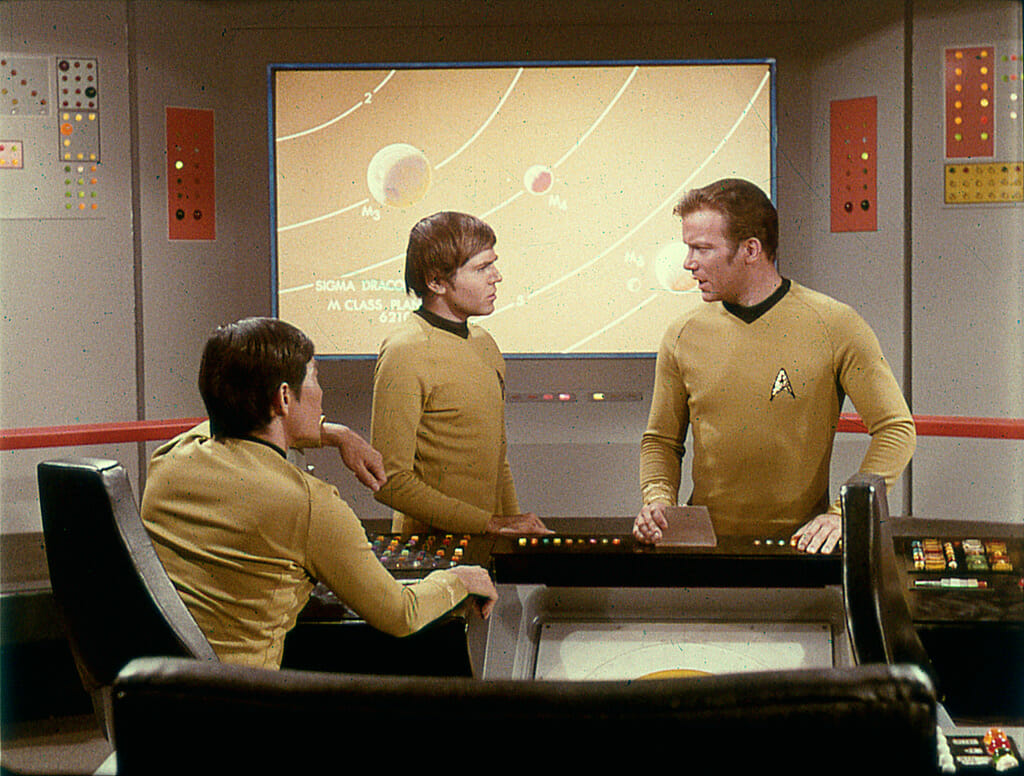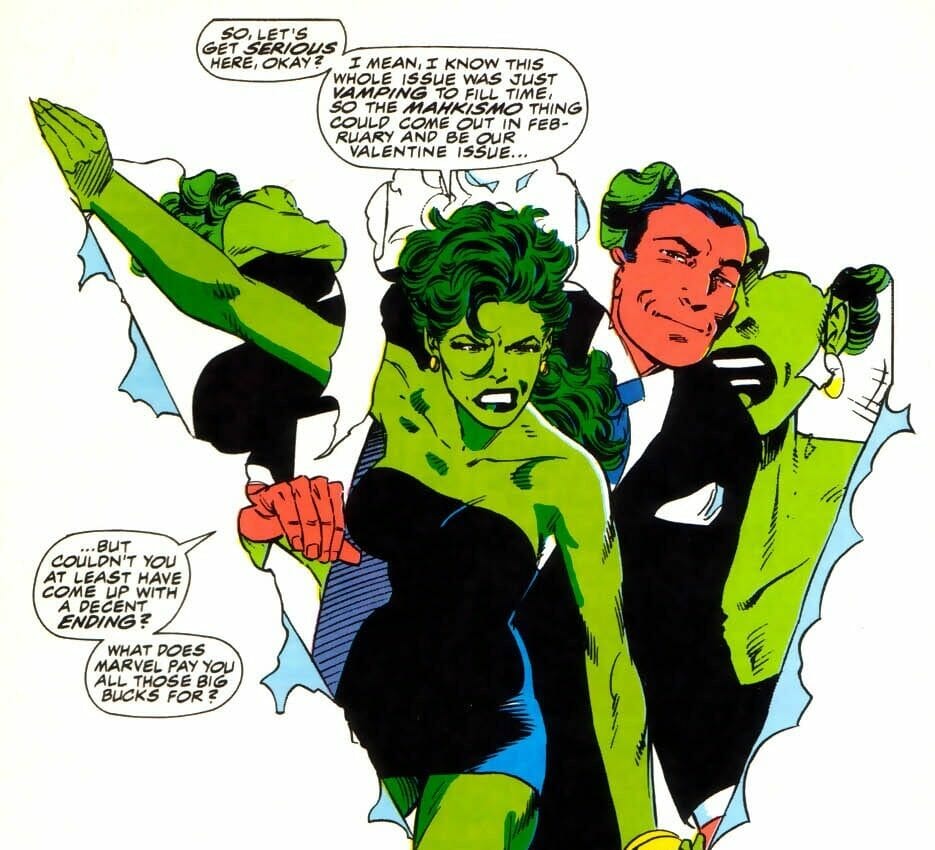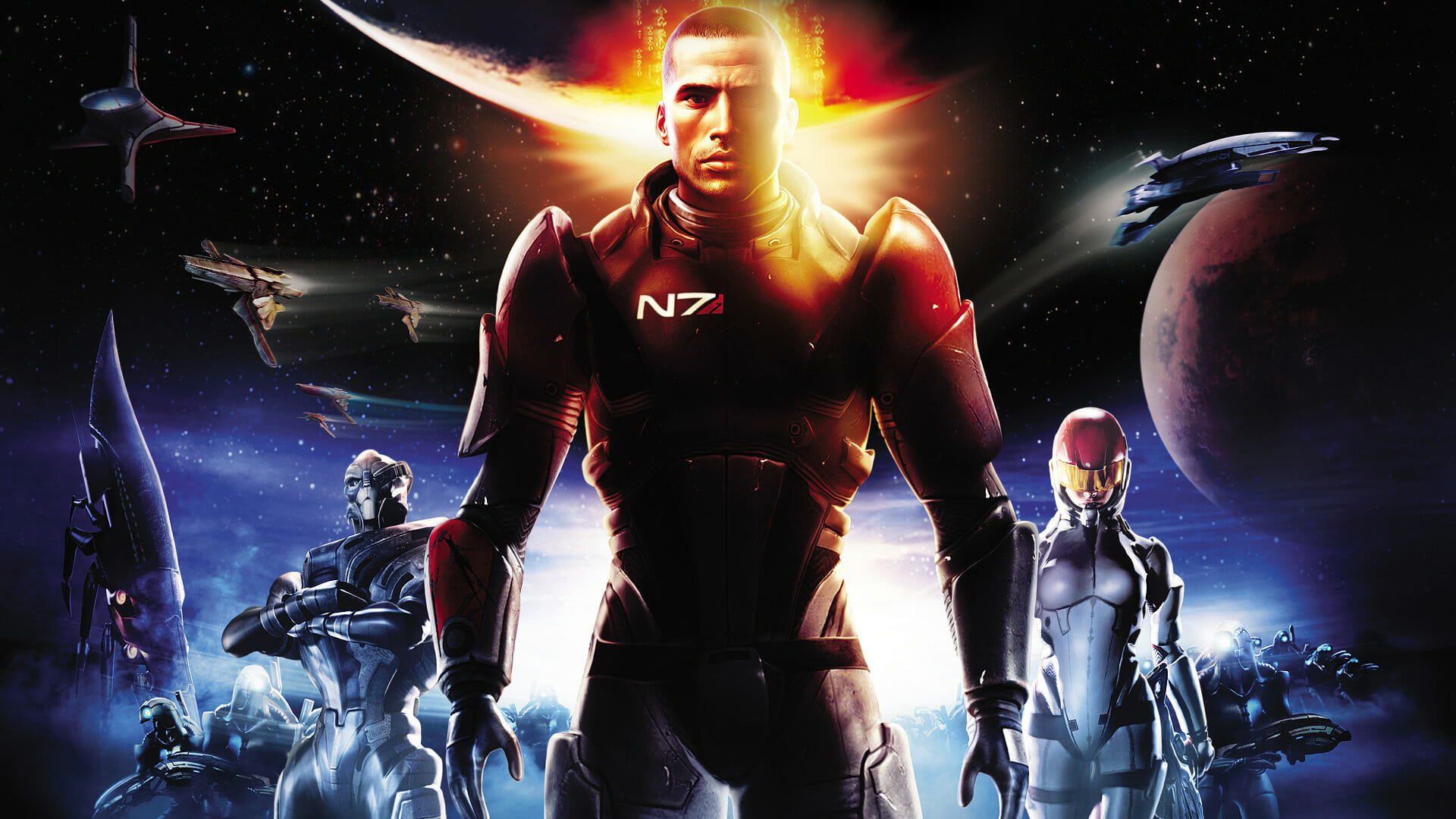
Star Trek Romulans | Shakespeare in space
Author
Year
Format
How far does a soldier’s duty go? Is glory worth dying for? These and others are the questions Star Trek – Romulan: Pawns of War asks, following Shakespeare’s plays. Maneuvered into a senseless war by shadow agents, the mysterious Romulans become pawns of a galactic Cold War. Forced into the conflict, a happy family has to deal with death and loss as their monarch is crazed for conquest.
Star Trek, a Shakespearean sci-fi
From the lone episode Balance of Terror from Star Trek, the author John Byrne created a whole new story. From dialogues to plot, Romulans: Pawns of War feels like a Shakespearean tragedy. While never outright adapting Shakespeare’s plays like Akira Kurosawa following Macbeth for Throne of Blood, the inspiration is clear. The political plot of the Romulan Praetor thrusting his people into a bloody war intermingles with the personal story of a nameless Romulan commander and his wife. The commander, leading the assault on Earth’s colonies, is a veteran with a melancholic temperament. Echoing Henry V’s quote, “Every subject’s duty is the king’s, but every subject’s soul is his own“, he opposes the war. In fact, he admits to his companions his hate for the Praetor. And yet, his duty remains to the monarch. When Captain Kirk defeats him in battle, the commander follows his orders to the letter and goes down with his ship, in an act that will start the comic’s plot.
The Romulan commander’s wife follows her husband as a tragic character. When the Praetor convinces the population that Kirk is a murderer, she realizes it’s a cover-up. Thus, she transforms into Hamlet, orchestrating her revenge against the monarch. Even her son is a tragic figure. As Iago deceives Othello, so does the Praetor trick the young Romulan into believing his dad’s murder. While Othello murders his wife in jealousy, the Romulan boy joins the Navy and commits atrocities to find Kirk.

A play in space
By the same token, Star Trek‘s relationship with Shakespeare is long and fruitful. Themes and story beats are scattered throughout the entire franchise’s history, like, for example, King Lear influencing The Wrath of Khan. In addition to using Shakespeare’s plays as inspiration, TV series and movies directly referenced the English playwright over the years. Actors like Patrick Stewart and William Shatner were also theatre actors in Shakespearean plays. Even within the universe of Star Trek, the characters quote Shakespeare and frequently read his plays on screen. In The Undiscovered Country, Canadian actor Christopher Plummer played an evil Klingon known for his love for Shakespeare. Moreover, the connection between Klingons and Shakespeare spawned fan interpretations of the plays, spoken completely in the aliens’ language.
Ancient Rome and the Cold War
Romulans: Pawns of War has a solid grasp on real history, too. The Romulans are inspired by Ancient Rome. For example, ships use a raptor as a symbol, and the Senate struggles with a monarch for power. A proud species living in a martial society, the Romulans of Byrne’s comic are ruled by a Praetor very similar to Albert Camus‘s 1938 play Caligula. In addition to Imperial Rome, the comic also has a connection to the Cold War. The Klingons are behind the Praetor’s thirst for conquest, as they incite him to battle the Federation in a proxy war that would help the Klingons in defeating the humans. Originally, the Klingon Empire was a stand-in for the Soviet Union, while the Federation was for the United States.
On the other side, battles in the comic are inspired by submarine battles. As space fights would hardly look like the close-quarter dogfighting Star Wars offers, battles between the Enterprise and the Romulan warships closely resemble The Hunt for Red October. As Romulan ships turn invisible, there’s another aspect of submarine warfare in the comic: space weapons are used as depth charges to find them.
An evergrowing franchise
Since the Original Series from the 1960s, Star Trek has been a cultural monolith for multiple generations. In addition to Star Trek and Shakespeare, the franchise’s relevancy expands into actual science. For example, it predicted technological advancements such as portable communicators and space flight endeavors, like the Space Shuttle Enterprise. On air without interruptions between the 1960s and the early 2000s, Star Trek is a symbol of late 20th-century television. Rebooted by JJ Abrams movies in 2009, the franchise spawned a new set of series like Discovery and Picard. Lower Decks, a humorous animated series inspired by Rick and Morty, expands Star Trek’s universe into the animation field, following the trail left by an obscure 1970s cartoon.
Tag
Buy a ☕ for Hypercritic









